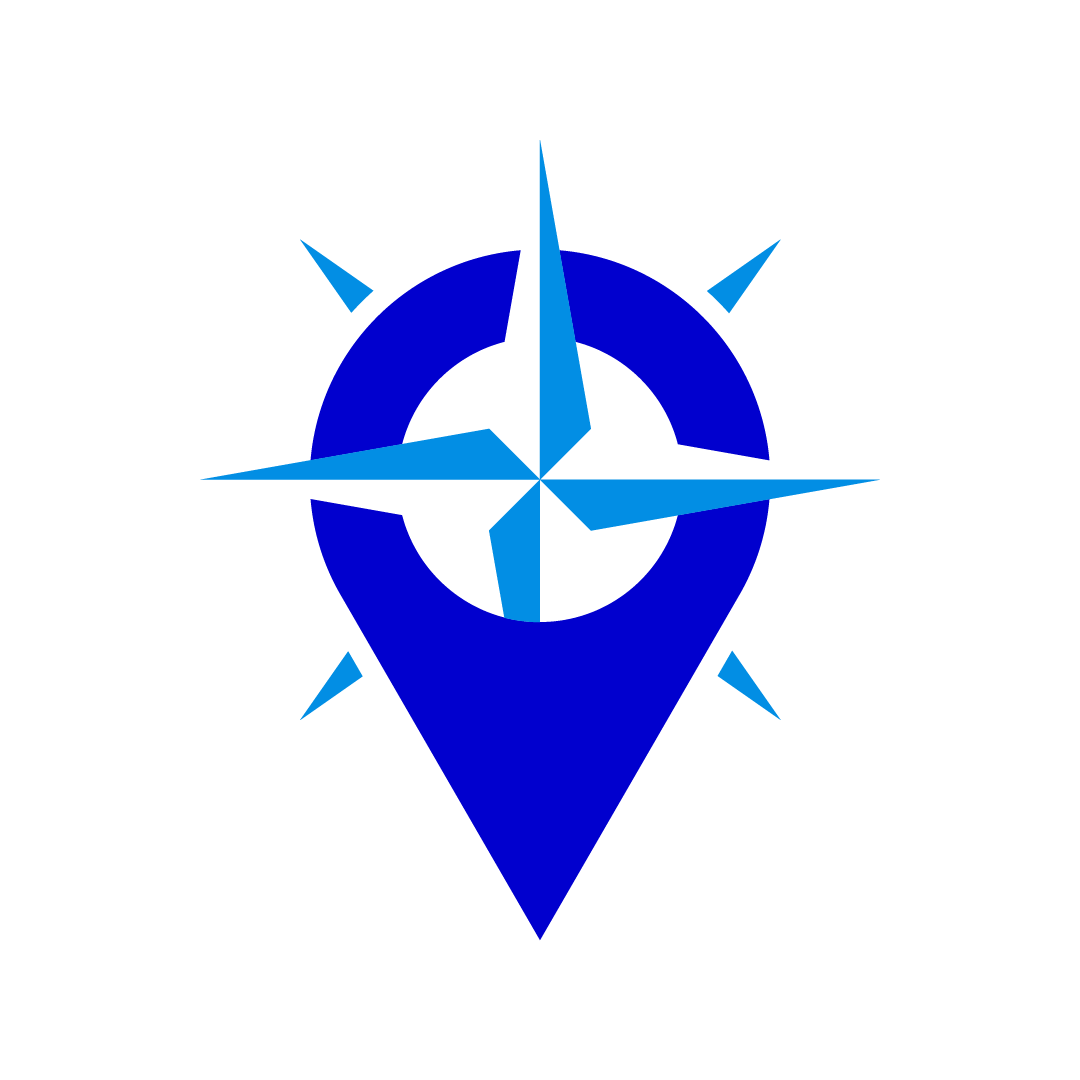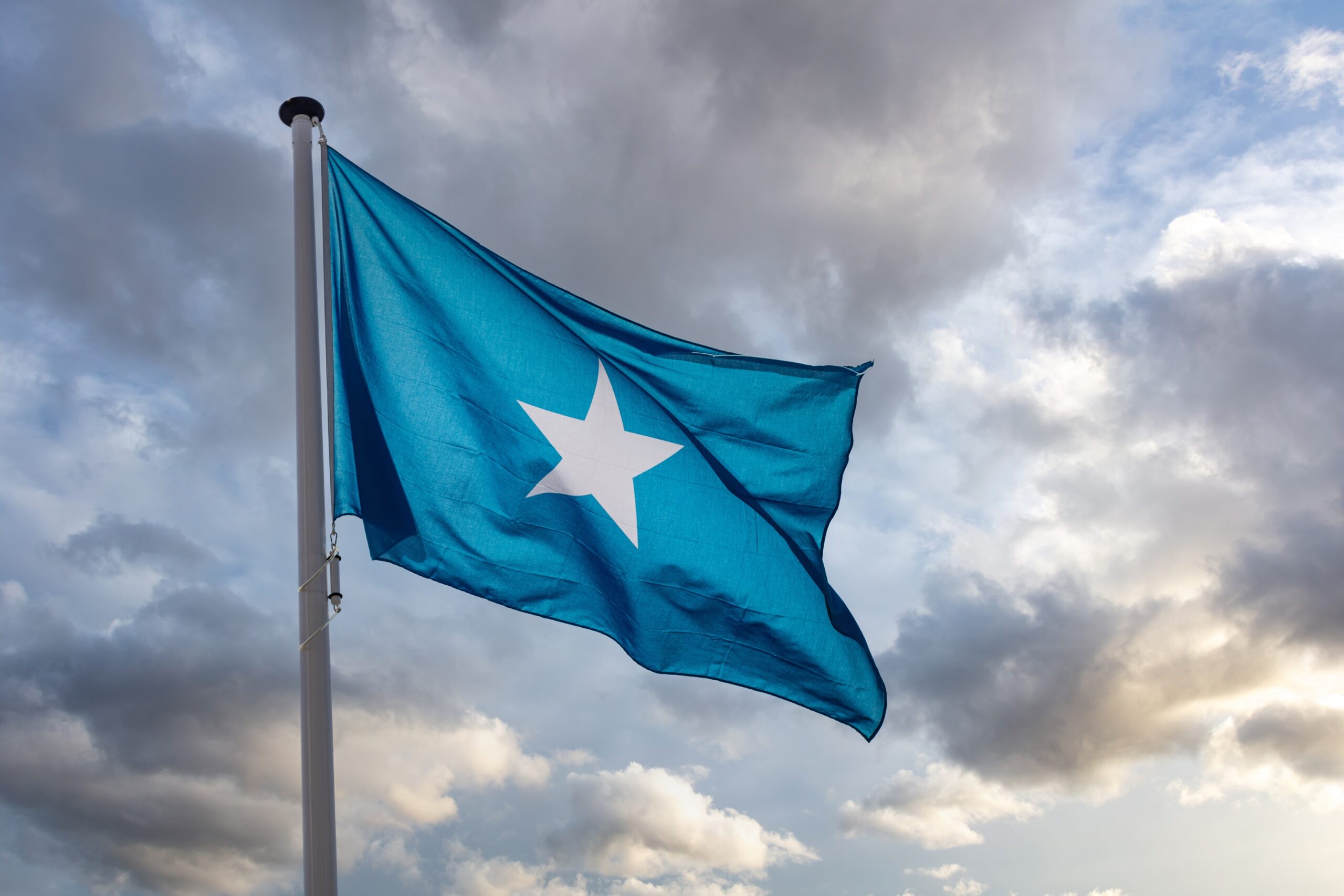This is the city of Mogadishu, It is located just north of the Equator on the Indian Ocean in East Africa.
The nearest neighboring capital Nairobi lies to its south west in Kenya; about 1000 km away and Addis Ababa in Ethiopia is a similar distance roughly 1066 km north west.
locally known as Xamar, it is the capital and most populous city of Somalia currently it has an estimated population of 2.28 million residents.
Mogadishu was One of the earliest settlements on the East African coast
it enjoyed the height of its prosperity during the 14th and 15th centuries and was during the early modern period considered one of the wealthiest.
It became the capital of independent Somalia in 1960 as the former colonial possession of Italian Somaliland was dissolved.
While possessing a rich cultural heritage and by being situated on the horn of Africa with beautiful beaches, modern day Somalia is unfortunately mostly associated with piracy, and war.
The start date of the Somali civil war is disputed, but it likely began around 1989 and the fighting reached Mogadishu in 1991.
Now that the country has reached over 30 years of fighting with a total casualty list that is over 500’000 thousand people things appear to be somewhat settling down.
Mogadishu has witnessed the development of the city’s first gas stations, supermarkets, and incoming passenger flights.
its main market offers a variety of goods from food to electronic gadgets, Hotels operate with security support from private militias.
And if you look up Mogadishu on trip advisor you will see hotel and restaurant reviews even beach resorts.
It appears There has been a concentrated effort to make Somalia look like a real nation.
In reality however that is pretty far from the truth. None of the issues that lead to the start of the civil war have been resolved.
And it seems the city has just accepted state of war as “Business as usual”
The appearance of Somalia as a real country is a facade that doesn’t go very far.
Travel advice for Somalia today states the following:
Those considering travel to Somalia, including Somaliland and Puntland, should obtain kidnap and recovery insurance, as well as medical evacuation insurance.
If you must venture to the city, you should be accompanied by hired guards and ride in, preferably, an armoured car.
Violent crime, kidnapping, bombings, indirect fire attacks, murder, assassinations, armed robbery, carjacking, illegal roadblocks and attacks by Al Shabab who are considered to be the most dangerous terrorist group in Africa is just a part of every day life, and business in Mogadishu.
So, why is this conflict going on for so long, what are its causes?
And What keeps this city and country from prospering and getting back on its feet?
The reason why it’s so hard to conclude the fight in Somalia is because there is no singular cause.
It’s a complicated dynamic of clans fighting for power, terrorists trying to instate islamic laws, entrepreneurs who profit from the war and a powerless government that is trying to establish itself after total collapse.
If you were to sum it up it’s because Somalia as it is today is not much of a country and does not have the capability of uniting its people – existing more or less in a state of anarchy.
Therefore, The focus over the last 10 years has been to establish a governing central authority that could unite the country. This however as you will see has many challenges and may never materialise.
FRACTURED SOMALIA
Despite years of efforts Somalia is still very fractured. It’s more like 4 nations living within the boundaries of one.
The Southern part of Somalia called Jubilant home to its central government in Mogadishu is split in two,
because Al Shabaab controls some 40 percent of the region’s territory to the south of Mogadishu.
The top Eastern part of the country is known as Puntland. It is also semi-detached from the central government.
And it’s the base where much of international piracy originated.
Then there is the issue of Somaliland. In the Westernmost part of the country which has been seeking independence since before the break out of the war.
While unrecognised internationally, Somaliland is a self proclaimed state with its own flag, parliament, currency and a national identity.
To go to Somaliland you would need to get a Somaliland visa.
Mogadishu and the government has very little influence over it.
And It also happens to be the most stable part of Somalia with the least amount of conflict and terrorism.
Therefore, Unlike the rest of the country its infrastructure and economy has been able to rebuild itself to a greater extent.
Asking why Somaliland has managed to be more stable than the rest of the country leads us to the next major source of trouble and to the actual source of the civil war.
Animation that switches the map to CLANS
Apart from Rwanda and Burundi, Somalia is the only culturally homogeneous nation in Africa meaning that its population is almost entirely made up of Somalis. While in theory this should have made somalia more stable; it has not.
The failure, collapse and eventual disintegration of the Somali state facilitated the emergence of civil militia groups, often aligned to various political clan groupings that have been around long before the civil war and make up the hierarchy of Somali society.
described as ‘clan families’, which group together a number of people that share a common descent.
Among these the Darood are generally regarded as the largest, and are spread across the northeastern and central zones of the Somali territory;
Their pre-eminence is contested by the Hawiye clan, whose political weight is greatly increased by their control of Mogadishu.
A third clan family, the Isaaq, are heavily concentrated in the north central part of the Somali territories that was to become Somaliland, and have become associated with that region in particular.
Which is quite opposite to the Dir, who are widely dispersed all around Somalia.
A final grouping, the Rahanweyn, who have been concentrated in the river valleys of southern Somalia.
Though each clan is broadly associated with a ‘home’ territory, the boundaries of such territories are constantly contested especially when resources are at stake.
Clan conflicts do not arise only at the level of the clan family or the individual clan, but at the sub-clan or sub-sub-clan level or any level appropriate to the resources that are being fought over.
During the government collapse these clans began creating their own militias and under the pretext of providing security to their clansmen, created a process by which clans armed themselves in anticipation of attacks by rival clans.
And after the recent Ogaden war the country had an abundant supply of small arms.
So, The reason why Somaliland is doing better than the rest of the country is mainly attributable to the fact that it is held by one major clan whereas the rest of the country has been caught in the midst of a bitter clan struggle.
The clan’s political differences are used as instruments of conflict by militia leaders in their quests to plunder what remains of Somalia’s resources under the pretext of supporting their respective clans.
As the established government broke down leaving a power vacuum
It engulfed Mogadishu and much of the country in fierce clan fighting.
Eventually Mpgadishu was split between different clans.
Thus, unlike in most cities in Africa, Mogadishu and most Somali cities are composed of districts or neighbourhoods identified with a dominant clan from the area.
Residents may move across the city to access markets, schools, the airport, and other services, but to own property and reside is only possible in zones associated with their clan or sub clan.
Typically, in Somalian cities members of clans without a power base in the city must forge a protection relationship with a more powerful clan.
And Mogadishu is an example of this category.
The city is dominated by the Hawiye clan family; and some neighbourhoods such as Medina are known as cosmopolitan hotspots where Somalis of all clans can reside and do business, though with security arrangements that must be negotiated with the dominant local clan.
Members of marginalized clans are more vulnerable to violence and disasters since they lack access to necessary resources and are more exposed during the disasters such as famines that have struck in the country in 1991 and 2011
In such circumstances, they turn to more powerful clans, external military forces or Al-Shabaab for protection and representation thus magnifying conflict.
Al shabaab
Al Shabaab emerged in 2006 as a force that was opposing Ethiopian soldiers who were occupying Mogadishu at the time adding another unpredictable element to the situation.
Wars between Somalia and Ethiopia, stretch back to the 16th century.
There is a long history of painful competition between the two countries.
More recently they are involved in the dispute over the Ogaden region which in theory belongs to greater Somalia but was given to Ethiopia.
In this sense when the Al Shabaab emerged they were viewed as freedom fighters and liberators of Somalia and gained a lot of support.
Al Shabaab became much more than just a terrorist organisation. It became like a government body that also happened to engage in terrorist activities.
acting almost like a competitor to the federal government.
Al Shabaab managed to establish the first legal system in the country since the start of the clan based civil war.
Many in the country perceive Al Shabaab to be less corrupt than the federal government and more capable of providing certain services such as justice.
Interestingly, when six Al-Shabaab leaders were interviewed they suggested that the group was fighting a political rather than an ideological battle, and that its members had little interest in Al-Qaida’s global agenda even though they are linked with each other.
Many seek to join its ranks even now,
as the organisation is very good at spreading propaganda and marketing itself.
Younger members are attracted by the opportunity for adventure, prospects of economic security, and because of the encouragement of friends who have already joined.
Fighters often leave because life in the group, and the treatment of its members, are harsher than expected, or they find that the group does not abide by its religious principles in practice, especially in its brutality.
Family members can sometimes persuade members of Al-Shabaab to leave the group but the practical difficulties and dangers of desertion constitute a major deterrent.
In recent years al shabaab has lost quite a lot of ground thanks to AMISOM african union peacekeeping mission which has pushed it out of the capital and now its strength lies mostly to the south of Mogadishu.
However that does not mean that Al Shabaan is no longer operating in the city. Al Shabaab operatives are everywhere and its men are constantly keeping the citizens of Mogadishu on their toes.
A bombing or an attack can happen at any moment anywhere in the country apparently in the name of bringing order and Sharia Law to the country.
ECONOMY OF MOGADISHU
While war is truly horrendous, for most of the people involved there are always those who seek to find a profit and Mogadishu is ripe for profiteering.
in countries where effective government institutions are absent, security and social services, such as education and health care are often privatised as has been the case in Mogadishu.
This has lead to some individuals having an interest in the continuation of violence
to engage in lucrative sectors of the economy which would be regulated or banned under a functioning government.
As there hasn’t been a stable federal government in the country for the last 30 years business elites have gradually taken over basic functions.
health services, the education sector, telecommunication networks and ‘public’ transport have all been privatised.
And in this way it is likely that powerful individuals benefit from the lawlessness in Somalia and have an interest in the continuation of violence.
One example is the extremely high profit margins in the tax-free import/export sector.
Tax free of course because there is no central authority to tax the imports and the exports.
Sugar, rice, manufactured goods, electronics, cigarettes and petroleum are imported tax-free;
Some of these goods are then smuggled to neighbouring states, such as cigarettes to Kenya.
Another is of Clan leaders, in collaboration with business people, engaging in sectors such as drug trafficking and even money printing.
As there is no government to print new bills, why not print them yourself?
The most visible shift to this war time economy happened after 1991.
Some people started to sell looted property to foreign countries.
The Chamber of Commerce in Dubai recorded significantly higher import figures
for scrap metal, copper and machines as much of the public infrastructure in Mogadishu was pillaged.
factories were exported as scrap, power stations, bridges, national assets, telecommunication equipment, marine vessels, national schools and offices, even national monuments were dismantled and exported.
Some positives came too. For example It was a private initiative to rehabilitate roads leading to the satellite airports of Mogadishu.
When the international airport of Mogadishu was closed during the worst years of war, local businesspeople and clan leaders alike established their own airstrips on the periphery of the city.
There high ‘Taxes’ and ‘fees’ were then charged
Although airport facilities were non-existent in these private airports, ‘fees’ resembled those of professional airports.
In this way a private airport or rather an air strip could have easily generated over a million dollars in revenue per year making the privatization of entry and exit points to the country extremely lucrative.
As a result even aid agencies had to pay large sums for the delivery of food and support to disaster struck regions.
The qaat trade is another source of income for faction leaders and
Business people.
Quaat is imported from Kenya for southern Somalia, and because of its considerable high profit margins, the qaat trade has become a major pillar of Somalia’s war economy.
The use of the narcotic drug in southern Somalia has significantly increased since the collapse of the former regime. Young militia men began chewing to cope with fear, fatigue and hunger. Others, including women, adopted the habit as a means to combat anxiety, traumatic experiences, unemployment and insecurity.
In 2002 the price for an AK-47 was $250 and $25 for an M16.67 The price difference can be explained by the relatively low cost of AK-47 ammunition compared with that of an M16.
Cir-toogte is one of Mogadishu’s weapons markets, where an AK-47 can be bought at open stalls.
Cir-toogte translates into ‘shoot in the air’, as potential clients prefer to test the rifles before purchasing them.
In order to avoid paying supporters in cash, warlords used to distribute AK-47 rifles at the end of meetings as payment.
While less prevalent that they used to be roadblocks, where gunmen extort money from passing drivers, are dotted across to Mogadishu and along roads and dirt tracks throughout the country, providing a major source of income for clan warlords.
Militia members, armed with guns and sometimes with double-edged knives, erect wooden barriers to stop trucks and buses.
If the cargo is valuable, they may steal it.
The evidence seems compelling that some key individuals gain from the
continuous conflict, whereas the majority of Somalis suffer from continued
insecurity, poor health and educational standards and exclusion from job
opportunities.
And The absence of secondary education and universities makes it
particularly easy for the militia to recruit among the younger male
Generation.
As we can see this private economy that has been created in Mogadishu can be very lucrative however it is sustained at a very high social cost and requires the continuation of conflict in the city.
WHAT NOW?
The circumstances that I’m describing are the same circumstances that existed in Mogadishu 30 years ago and still more or less exist there now.
Things have changed; the Federal Government has more power but the overall picture isn’t that different.
All military interventions have failed and some such as the infamous Battle of Mogadishu depicted in Black Hawk down ended in disaster.
Clan power struggles inevitably infiltrate the Federal government.
Weaker clans are prevented from accessing enough resources for their survival, Al Shabaab keeps carrying out bombings, shady entrepreneurs extract the money that they have made illegally out of Somalia and invest it elsewhere, while the country cannot even elect a president without an open gun fights taking over its streets even in 2020. While its neighbours such as Kenya and Ethiopia might not even want to see a united Somalia and secretly undermine it.
When are we going to be able to go to Somalia for a vacation? Possibly never and many certainly believe that it never will be a nation, maybe in 2077 but I suspect not within this decade.
While it is starting to look like a nation Somalia is far from it.
The sooner Somalia’s major cities become more inclusive, the more durable Somalia’s currently fragile political settlement will be. Strategies to support Somali-led efforts to negotiate greater inclusion in their cities should be a top reconciliation and development priority.
Our main recommendation is to support Somali government and civic leaders to develop an urban inclusivity index that would help them measure and monitor changes in degrees of inclusion and exclusion in Somali cities.



